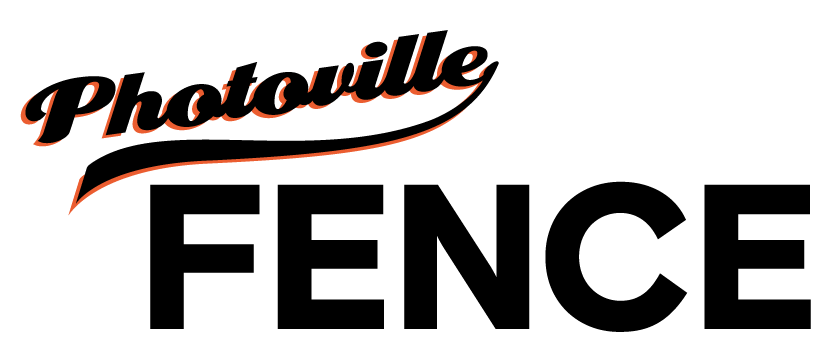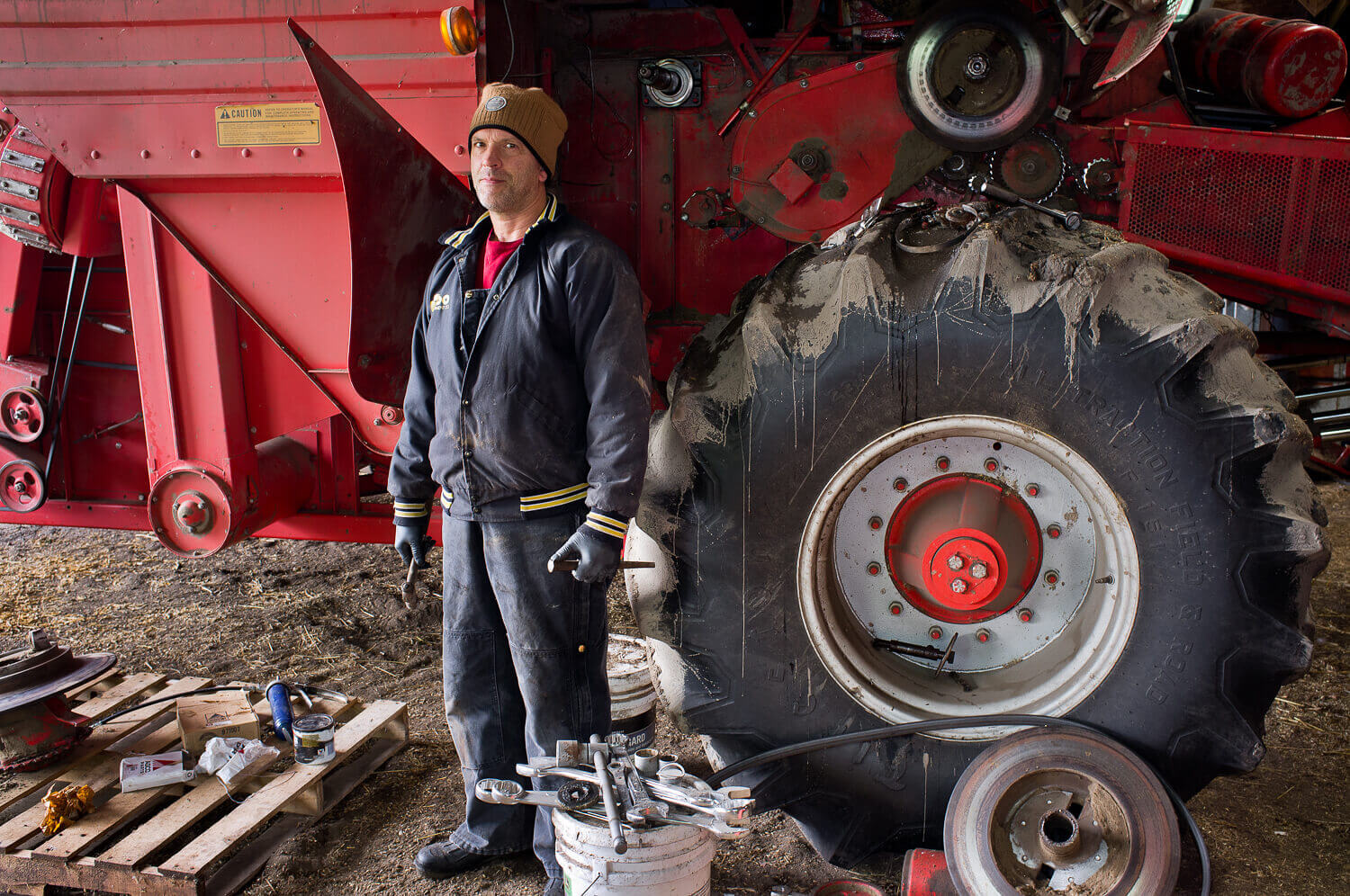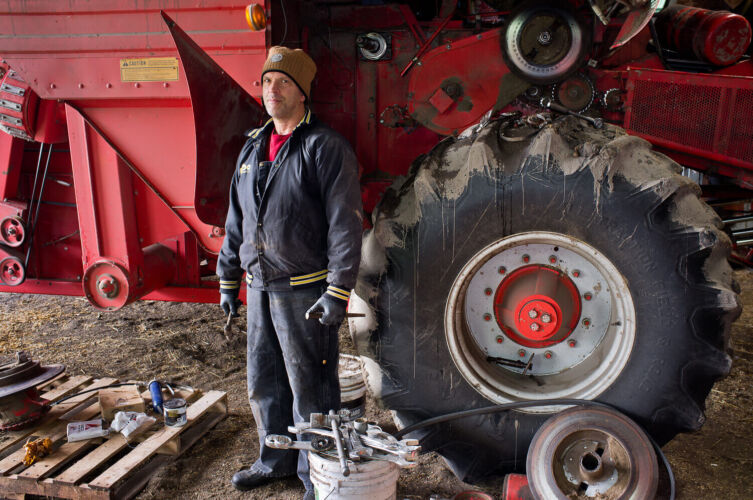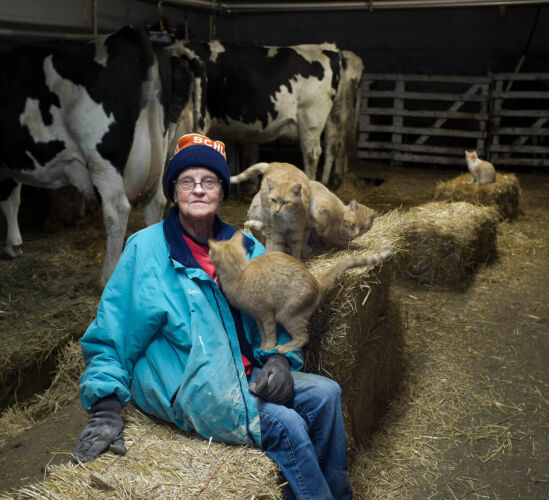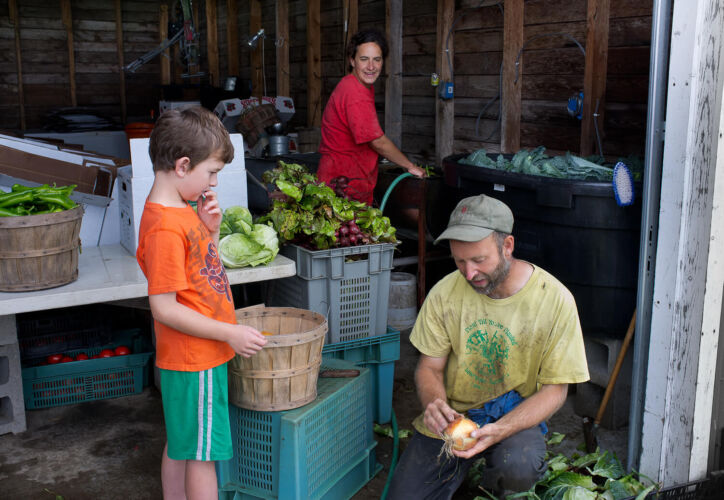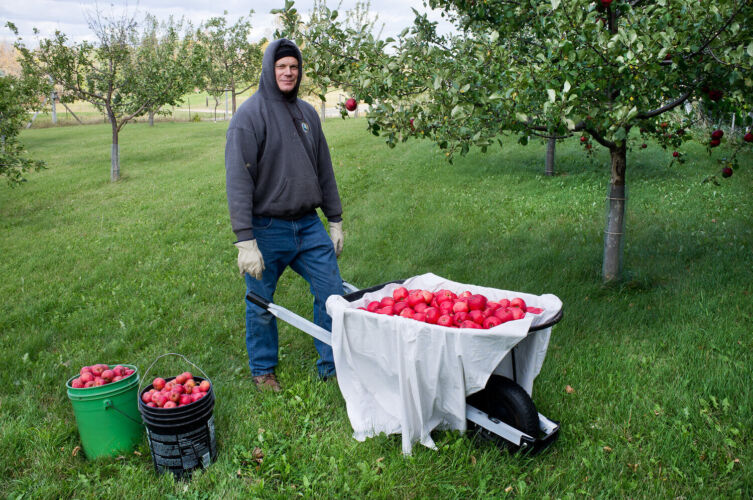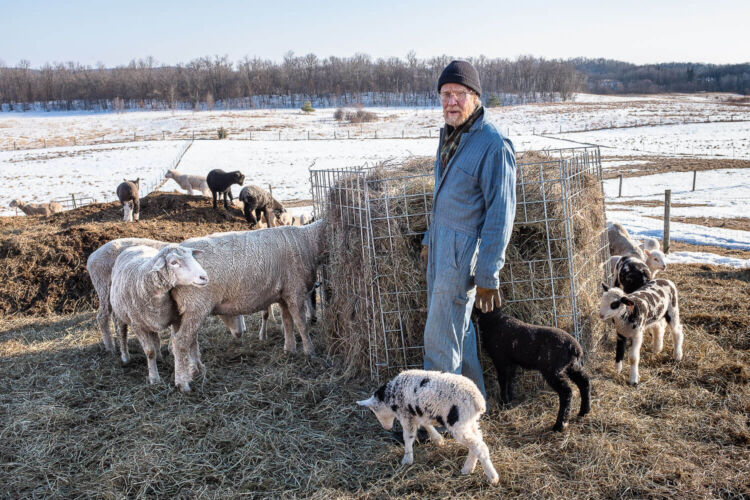project STATEMENT
Working Land unearths meaning behind rural landscapes. It explores how human labor transforms the land, and in turn, the land shapes the life of the worker.
People who live and work in my rural Otter Tail County neighborhood gain an intimacy with a place by deriving—or aspiring to derive—some livelihood from it and by leading lives in contact with natural processes. They dwell in long-term relationships with rural landscapes and ways of work—sometimes by choice, sometimes by birth—with their centers of balance inclined toward the natural world. My ancestry includes lives spent working their plots of land. These personal yet common roots inspired this project.
Seeing beautifully considered images of a farmer in work clothes against a fertile landscape or a “portrait” of an animal or machine elevates the idea of the everyday rural workplace. They help viewers to see art as more than luxury, collectible, or decoration but rather as an honest and heartfelt expression of who we are, how we work, and where we work.
The Working Land project expresses the people’s connection to their land, animals, and machines that anyone can feel—whether or not they work on the land themselves.
